
Soil Associations
0721d WILCOCKS 2
Soil and site characteristics
Slowly permeable seasonally waterlogged loamy upland soils with a peaty surface horizon. Some very acid peat soils.
Geology
Drift from Palaeozoic sandstone. mudstone and shale
Cropping and Land Use
Stock rearing on wet moorland of moderate grazing value and some permanent grassland; coniferous woodland; recreation.
Component soil series
| Subgroup | Series name | Percentage | WRB 2006 link |
|---|---|---|---|
| 7.21 | WILCOCKS | 50% | Dystric Histic Stagnosols |
| 10.13 | CROWDY | 15% | Ombric Sapric Histosols |
| 10.11 | WINTER HILL | 15% | Ombric Fibric Histosols |
| 6.54 | HAFREN | 10% | Endoskeletic Histic Stagnic Albic Podzols |
Covers 667 km2 in England and Wales
Soilscapes Classification
| 19 |
Slowly permeable wet very acid upland soils with a peaty surface |
0721d WILCOCKS 2
Detailed Description
This association of wet loamy soils with peaty tops is widespread over Palaeozoic rocks in upland Wales and Northern and South West England. It usually occupies drift-covered gentle slopes where natural drainage is impeded. The cold wet climate with low summer temperatures have combined with slow subsoil permeability to produce the acid peaty surface horizons. Stagnohumic gley soils of the Wilcocks series cover over half the association but on thick peat, amorphous Crowdy and fibrous Winter Hill soils are found. On steeper slopes and ridges there are stagnopodzols of the Hafren or Hiraethog series. Wilcocks series now includes soils formerly described as Ynys series. Humic rankers belonging to the Skiddaw series and occasional loamy podzolic rankers occur near rock outcrops.
In the South West these soils are found mainly on Exmoor on flat or gently sloping land surrounding blanket peat. Here Wilcocks series, earlier mapped as Wilsey and Ynys series predominates, with some similar soils in reddish drift. The association also fringes western Dartmoor, north of Tavistock, on land mapped as the Wilsey series. Rainfall is lower here than on Exmoor and subsidiary soils include fine loamy cambic stagnogley soils of the Sportsmans series.
In Northern England, Hiraethog soils are more common than the Hafren soils, which lack an ironpan. Loamy podzolic rankers are also present. The association is mostly in the southern Lake District, where much of this land was mapped by Hall and Folland (1970) as the Grizedale association.
Soil Water Regime
The main soils lie wet for long periods or are permanently waterlogged (Wetness Classes V and VI). During winter excess rainwater moves rapidly from the saturated soil to streams.
Cropping and Land Use
Most of the land is permanent pasture or rough grazing because the climate is cold and wet. The semi-natural vegetation is mainly Molinia bog on wetter sites though Sphagnum can be dominant on the peat. Molinia or Nardus grassland or heather moor occupy drier ground. Natural fertility is very low and these very acid soils require heavy liming if they are to be improved. Reclamation also depends on improving soil drainage which in wet districts, is usually done with open ditches. In drier localities, pipe or tile drainage with permeable backfill improves the bearing strength of the organic surface sufficiently to support machinery for liming, fertilizing and reseeding, but poaching is still a risk. Rushes soon invade neglected pastures, but when reclaimed fields are well managed the increased transpiration of improved swards can significantly improve the strength, structure and stability of the surface. Forests cover more than a tenth of the land and Sitka spruce and Lodgepole pine yield moderately well but even with deep ploughing and draining there is a risk of shallow rooting so that trees on exposed sites are easily blown over. Phosphorus fertilizer is beneficial and timber extraction requires vehicles adapted to the soft ground. Left undrained and unforested this land provides a wetland habitat of upland plant communities of some scenic but little other amenity value because the soft wet ground and often tussocky vegetation make walking difficult.
In the South West the land is exposed, with high rainfall, and is mainly open moorland used for rough grazing, with a few reclaimed areas of permanent pasture. The semi-natural vegetation is mainly Molinia bog on wetter sites though blanket bog is locally dominant on the peat soils. Molinia grassland or moist heather moor occupies drier ground. On western Dartmoor, some patches carry acid bent-fescue grassland with gorse. Natural fertility is low and these very acid soils require heavy liming if production is to be improved. Successful reclamation also depends on improving soil drainage which in wet districts, is usually done with open ditches. In drier localities, pipe drainage with permeable backfill improves the bearing strength of the organic surface sufficiently to support machinery for liming, fertilizing and reseeding, but poaching is still a risk. Rushes soon invade neglected pastures. Most of this land lies within the Dartmoor or Exmoor National Parks and has much scenic and conservation value.
0721d WILCOCKS 2
Distribution Map
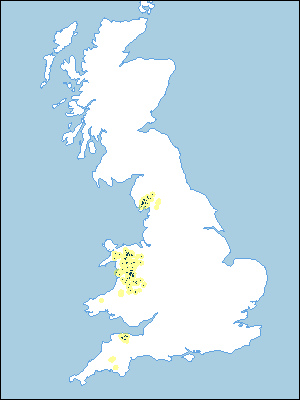 |
Note that the yellow shading represents a buffer to highlight the location of very small areas of the association.
Keys to component soil series
Wales
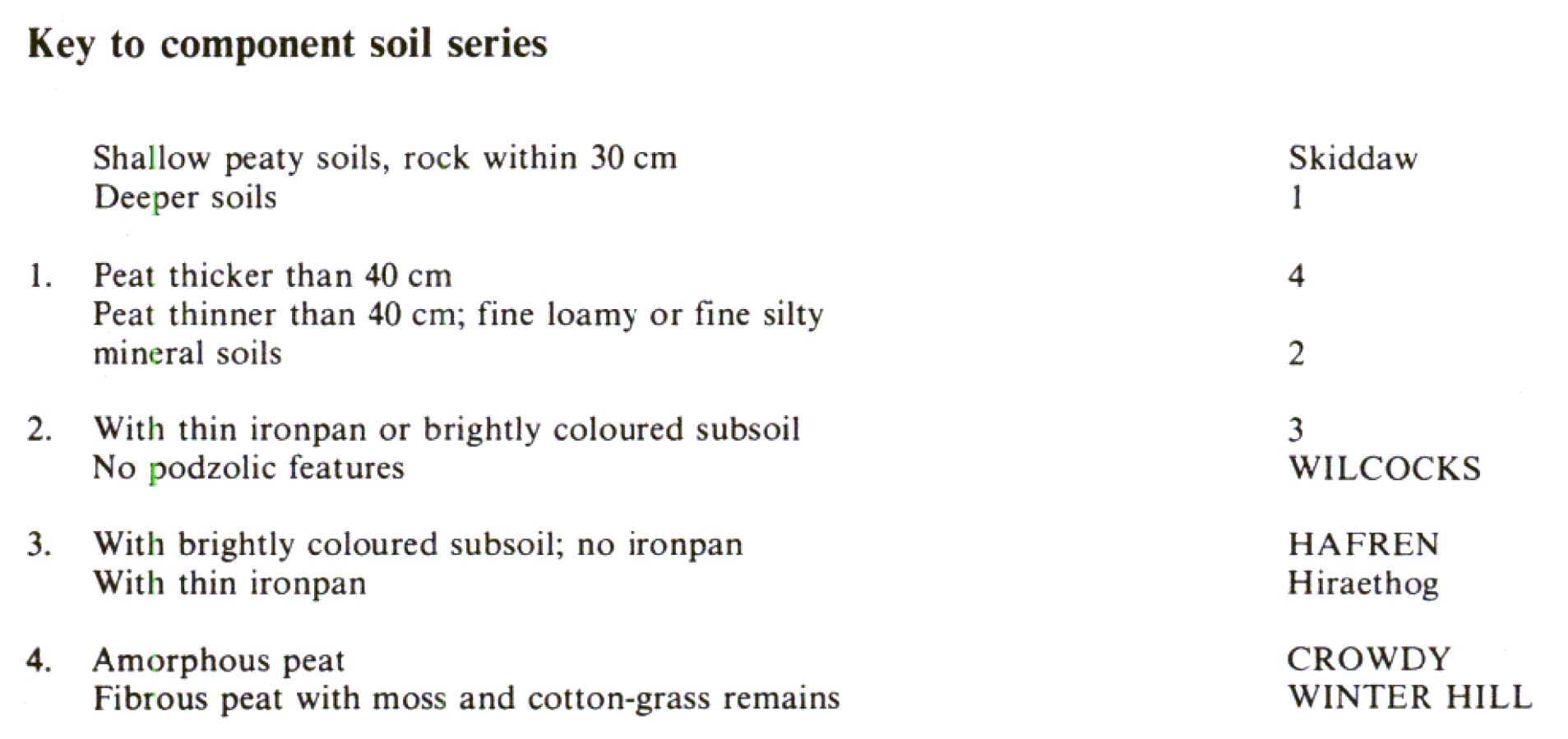 |
Northern Region
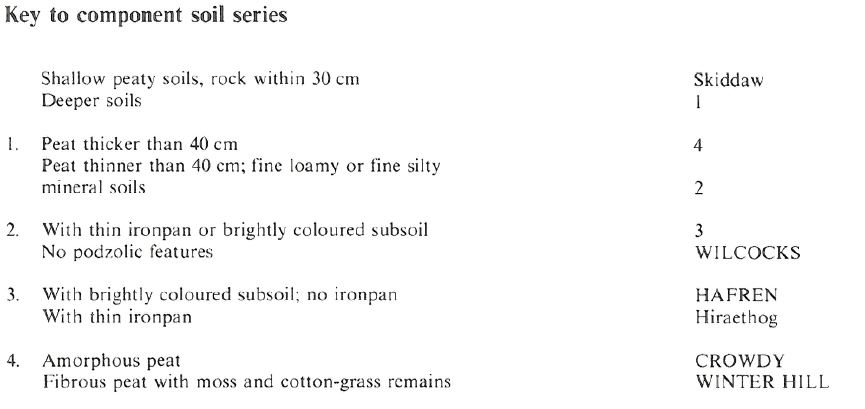 |
Typical Landscapes
South Western Region
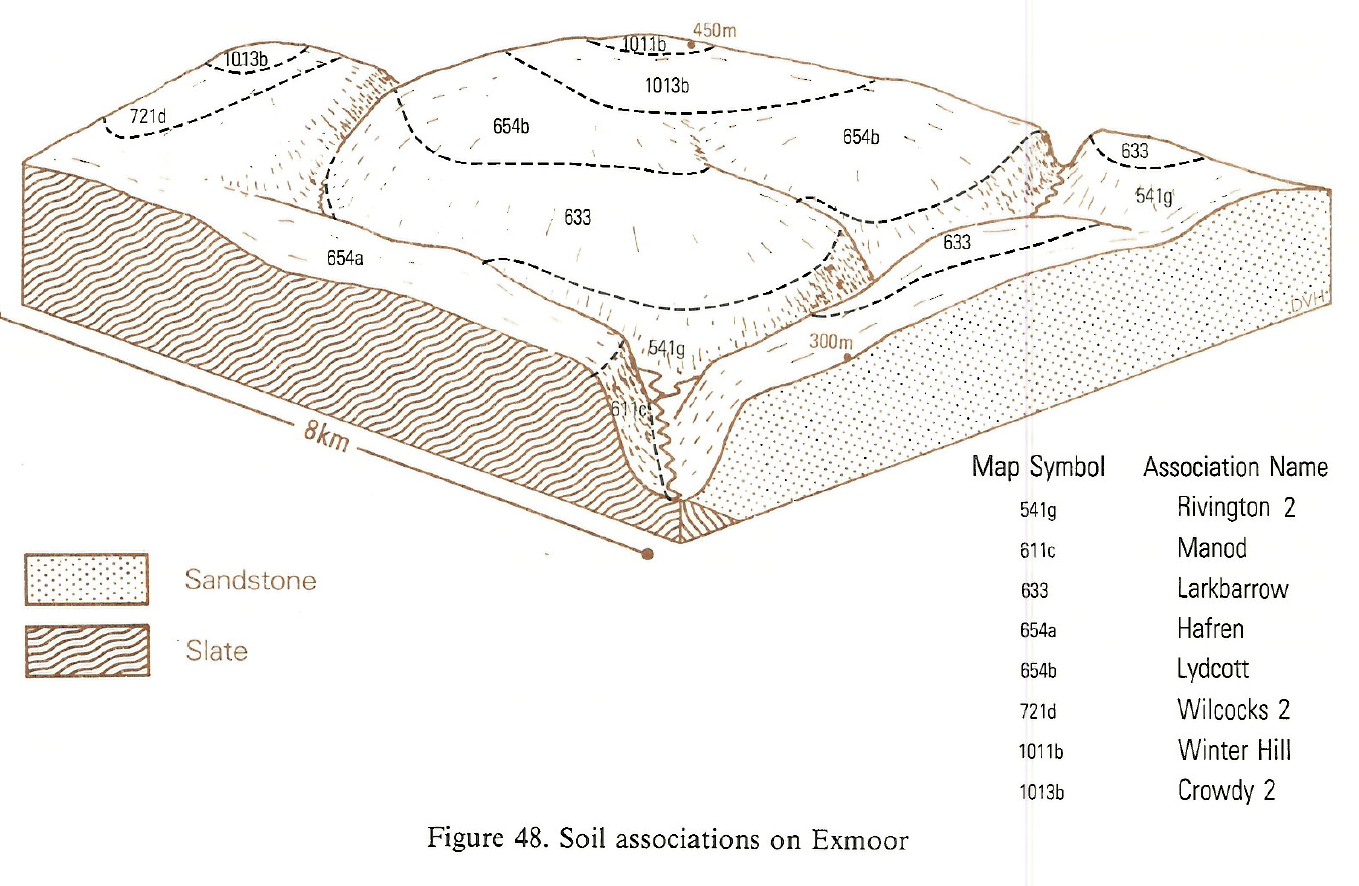 |
Wales
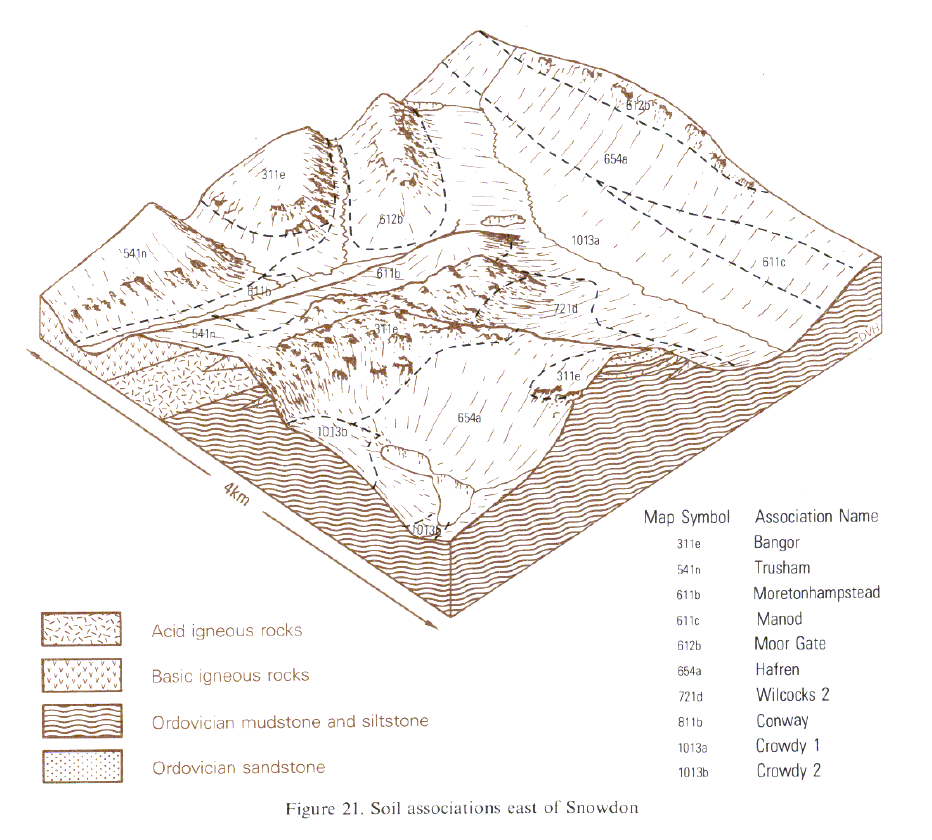 |
Wales
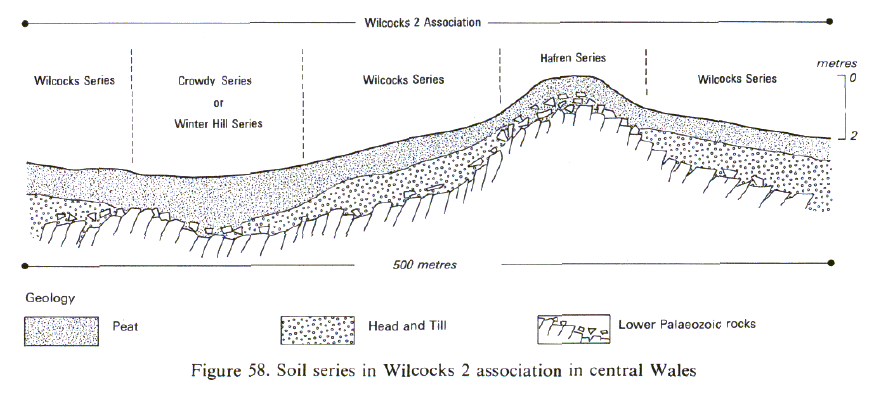 |
All information Copyright, Cranfield University © 2025
Citation: To use information from this web resource in your work, please cite this as follows:
Cranfield University 2025. The Soils Guide. Available: www.landis.org.uk. Cranfield University, UK. Last accessed 04/04/2025
